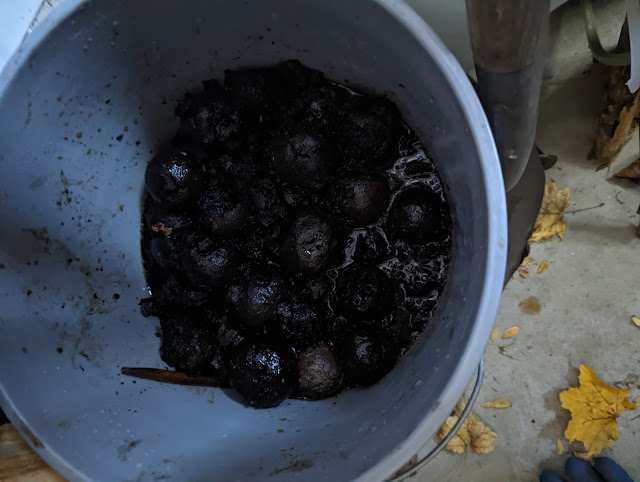Black Walnut Stain DIY Finishing Process - January 2022

Back in November, I posted a couple of photos and talked about the process of turning a collection of Black Walnuts into a homemade 1 scratchmade wood stain. In that post , I laid out the steps from collecting the walnuts to bottling the stain - and about midway is where we pick things up in this post. Six weeks of macerating in the five gallon bucket with a little bit of evaporation ended up yielding about 3 gallons or so of material. A quick stir with a stick every once in a while and I had a thick, black syrup. Along with a mass of walnut hulls and bits. I grabbed a piece of cheesecloth that Nat had on hand and a couple of rubber bands and donned a set of disposable gloves. Knowing this is, indeed, stain, I opted to deal with the process out in the yard. You can see the setup below. The five-gallon bucket on the right, topped with cheesecloth strainer. A smaller, one gallon finish bucket in the middle and a couple of pints of rubbing ...


